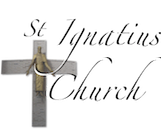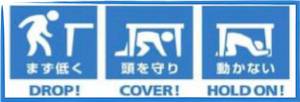
The Story behind the Marian Statue
May is the month when the Church all over the world honors our Blessed Mother Mary with flowers, processions, songs, and praying of the rosary to express their love for her. On May 31 we celebrate the Visitation of Mary to her cousin Elizabeth.
Surely you have noticed the statue of the Blessed Mother on the main floor of St Ignatius Church! You must have noticed she looks different from the usual popular Western images of the Blessed Virgin Mary. She is surrounded by thousands of paper cranes representing the petitions of many individuals who seek her intercession.
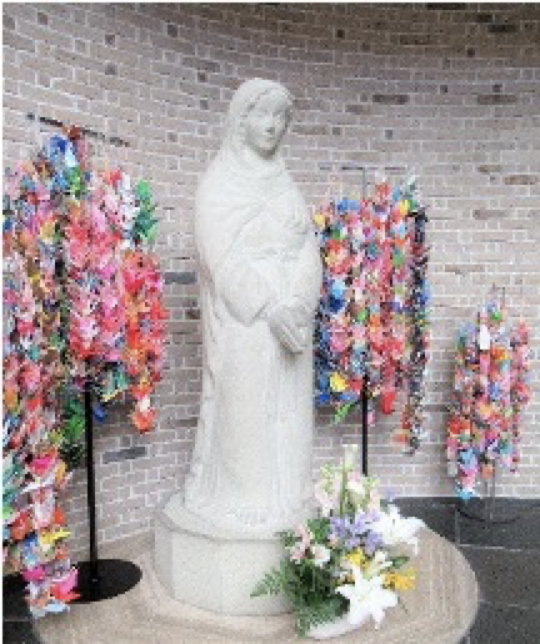
Have you ever wondered about the story behind the statue? In an on-line video released during our New Year’s celebration this year, one of the features was the statue of the Blessed Mother (See Shin-nen-kai. https://www.youtube.com/watch?v=TjqEoyccBQQ time in the video: 50:40 - 1:00:59). The Bulletin asked Izumi Sakura, one of our volunteers in the English Center, to translate it into English as our tribute to Mary this month of May.
Mr. Nakano Shigeru, Sculptor of Mary’s Statue, Parishioner of St. Ignatius
Facilitator: Have you noticed that during the Christmas and New Year holidays, the hands of the statue of the Blessed Mother, blackened from people touching them with devotion, have regained their whiteness? We asked the sculptor, Mr. Nakano Shigeru, who takes care of Mary’s statue every year as Christmas and the New Year approach.
Mr. Nakano: At the time of the ‘church clean-up,’ I have tried to cleanse the hands of Our Lady with detergent, but it did not work, so for the past few years, I have been removing the stain by rubbing stones that are used for finishing off a sculptural work.
Facilitator: Our Lady’s statue in the church is very much loved. We often see people reverently praying before it, sometimes kneeling, touching our Lady’s feet, some letting their tears flow. It is amazing! What was your image of this statue as you were creating it?
Mr. Nakano: I also created the statue of the Resurrected Christ to be in time for the Dedication of the Church. After that, I was commissioned to create a statue of Our Lady, but it took time because I sculpted it from stone all by myself. I felt sorry to be making the members of the parish wait with patience. When at last it was completed, it was already two years after the Dedication of the Church. Before starting the work, I heard a lecture from Fr. Nicolas. Then Fr. Cangas gave me a huge amount of material about Mary.
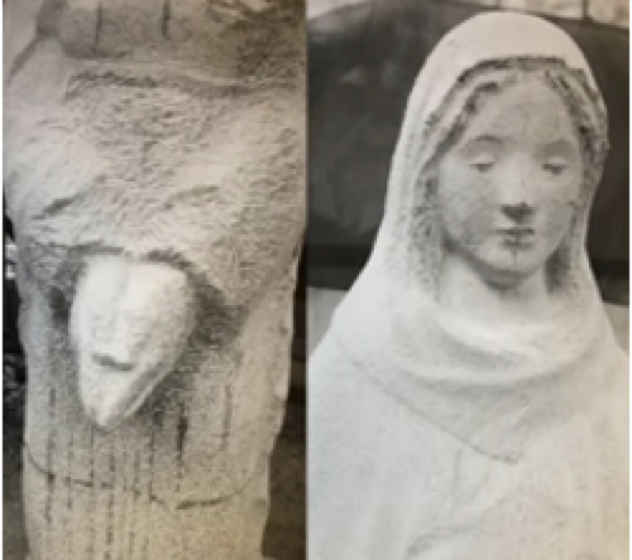
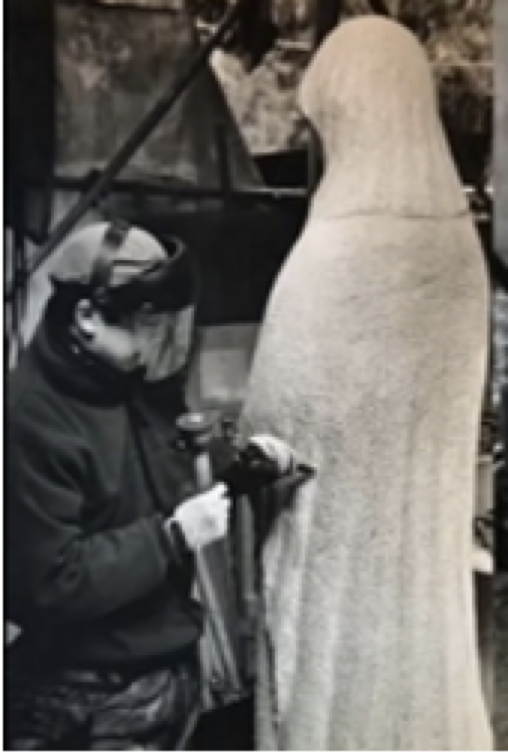
Facilitator: So you were under a lot of pressure!
Mr. Nakano: Yes. Also Fr. Ikejiri gave me various advice. After all these, there was consensus among all the Fathers that Our Lady’s statue should be simple and modest in appearance, so I followed their direction.
Facilitator: You also went on a pilgrimage in order to enrich your image of the statue.
Mr. Nakano: Yes. Just after completing the basic structure of the Resurrected Christ, I had some time on my hands. I was able to go on pilgrimage to Santiago de Compostela. We passed through small villages in Spain, and in the churches of these villages the statues of Our Lady showed a motherly figure, like mothers of peasant families. I realized that a statue of Mary should express closeness and love between the Blessed Mother and the local people. I came back to Japan and started the work. Still, it was difficult to give shape to what I envisioned. But the simple work of scraping the stone as the image of Our Lady gradually took shape was a soothing experience. I did not get tired at all.
Facilitator: You said the stone “tells” us, or “speaks” to us. Could you tell us more?
Mr. Nakano: I mean that “the presence” was already there in the block of stone. My job was to sculpt away the surface, while listening to the voice of the stone. I did not feel I created the statue according to my own preconception, but in dialogue with the stone, without hurrying, putting aside concern about the date it was due, concentrating fully on my dialogue with the stone. That is how I could bring the work to completion. I think it went well that way.
Facilitator: Tell us about the stone. Was it of a special kind?
Mr. Nakano: The stone was from Nagasaki, Japan. It seems that this stone is usually considered only as building material, not valuable for art. But my teacher, Mr. Funakoshi Yasutake, found the same stone used for a bench in Dejima, Nagasaki. He was sitting on it and when he looked closely, he became convinced that it would be excellent for sculpture. He acquired the stone from Nagasaki and created sculptures of St. Cecilia and St. Claire, so I followed in his footsteps. I acquired the same type of stone from Isahaya, Nagasaki, to make the statue of Our Lady for St. Ignatius Church. It is called, ‘Isahaya-ishi (stone)’, the same as that used for the cobblestones of the Dutch Hill (Oranda-zaka) in Nagasaki. As Funakoshi-sensei said, you cannot find such wonderful sculpting material anywhere else in the world. It is soft, but sharp edges can be made with it. It is not fragile, and you can make delicate, soft features from it. Working on it has been a healing experience.
Facilitator: Thank you so much for sharing your beautiful experience. I think it has been very benefiting for us to know that the sculptor who created the Resurrected Christ and Our Lady is a fellow parishioner and that you continue to take care of the statue of Our Lady for its maintenance. Thank you very much!
Mr. Nakano: I feel the responsibility. As long as I can move, I would like to continue taking care of the maintenance of the statue.”
Facilitator: Yoroshiku onegaishimasu! This has been a precious time hearing a testimony that would have not been heard otherwise.
 ENGLISH
ENGLISH  ESPAÑOL
ESPAÑOL 